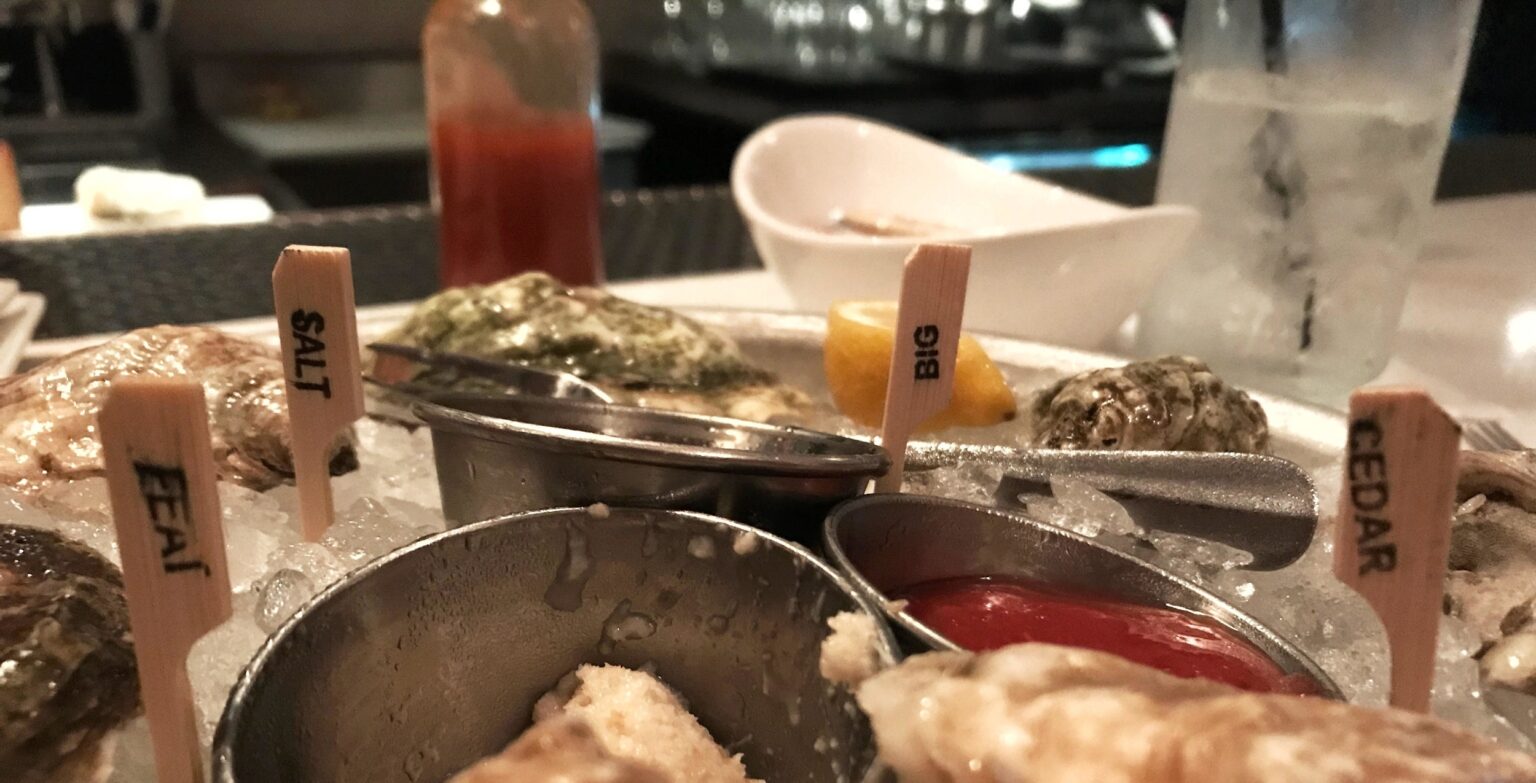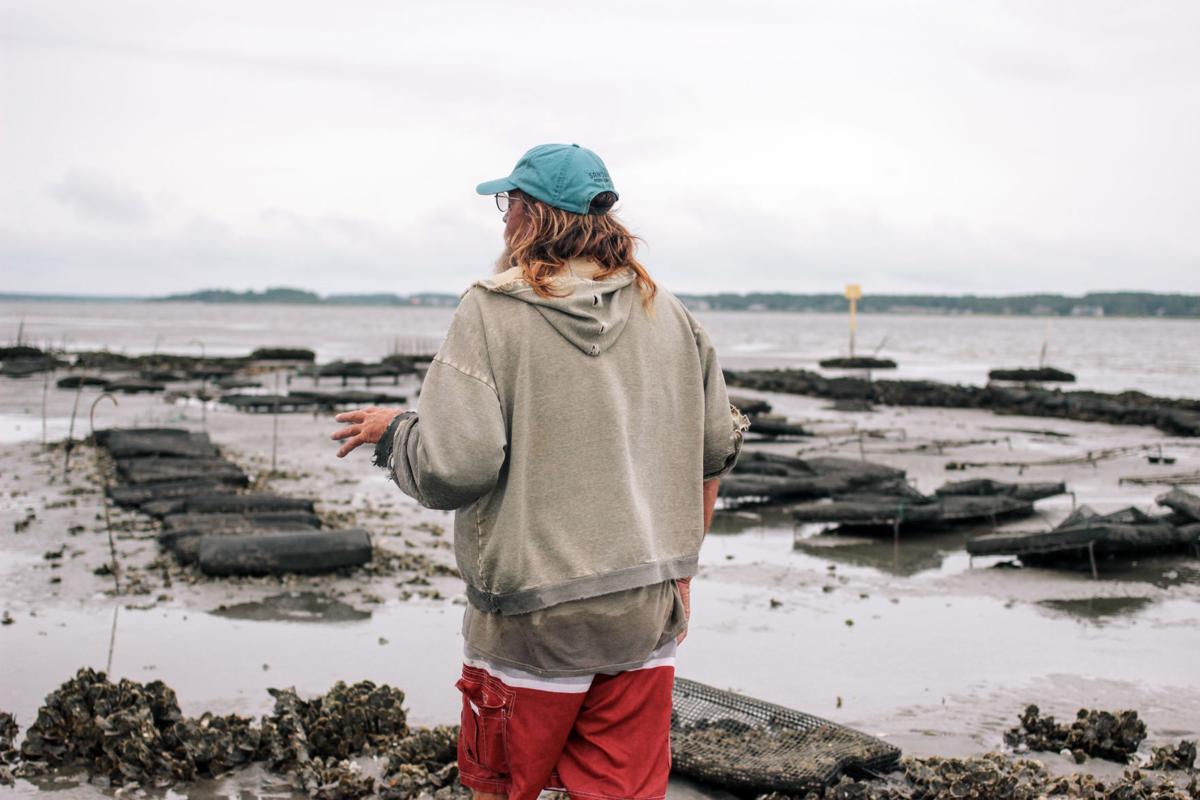Earthy, Edgy and One-of-a-Kind: Oyster Inspired Art by Willem Leemans

Oyster lovers come in all forms. From growers to shuckers, poets to architects, artists to environmentalists, restaurateurs to consumers – there are deep appreciations for them all over the world and in so many ways. Months ago I ran across an artist who was doing some pretty beautiful things with old oyster shells, and thought I’d get a new perspective from across the pond. Let me introduce you to Willem Leemans, a Dutch artist who became inspired by oysters for his artwork. He goes to great lengths in hunting down oyster shells, as it isn’t the easiest thing to do in the Netherlands, but in the end he makes something beautiful out of them for nature lovers to enjoy. Here is Willem’s story.
V: Willem, I love your work! May you share with us how you started as an artist and how you developed your talents over the years? What is your concept?
Willem: Like any artist I began in my younger years, but during my teens it’s disappeared in the background. I started working at a young age, so there wasn’t really much time to be creative. In my later years around 2000, I started up again, painting for our daughters Anouk and Esmée (e.g., a ballerina barbie and Peter Rabbit on their bedroom doors), and then slowly moved into making sculptures. Drawing was especially popular for me during the summer holidays in St. Remy de Provence (France) and for the children. I’ve drawn not only for and with the children, but also for free for retirees, as art to me is not just about making money. It’s always nice when people appreciate what you have made and how art can make anyone’s day. But the ideas during the holidays took form, during a nice walk or a city trip. This inspiration, along with encouragement and help from my wife, Jolanda, had us really brainstorming about the possibilities. Back at home I began working on the ideas and was hoping they were what we had in mind.
While editing or building a sculpture/lamp etc., the ideas change frequently. I work with natural materials so that determines whether something succeeds or not. Sometimes it ends up completely unlike what I had in mind and I have to start all over again. But in the end the result is always as it should have been, despite all the possible concessions that I’ve made.
V: Tell me about the vacation story from when you were inspired by oyster shells. How did it happen?
Willem: It started during a trip to Marseille (France). We had the car parked at the Mall Les Terrasse du Port. During a visit to the old port in the Centre, we saw that there were fisherman selling seafood to locals and tourists. So I took the plunge and went to ask what they did with the used oyster shells. They were just throwing them away in trash bags. So there I was with a smelly garbage bag in 25 degrees and a 60-minute walk away from the parked car. It was not a great combination but I bought a more sturdy bag and carried them around all day in Marseille. I was already brainstorming ways to make a lamp shade or chandelier out of them. Once we were back at the camp site I cleaned them twice over and laid them out to dry. Vacationers were pretty interested in what I was doing but once I explained it they were okay with it all. I was watching them dry and thinking how the light effect of the oyster shells would be cool in my projects.
V: What are some of the projects you have done with oysters? Can you share the intentions behind some of the pieces?
Willem: Oyster lamps and sculptures remain a significant challenge. Last summer I started to make a a three level chandelier without using a metal frame. Everything must happen very methodically, such as drilling the holes for the various connections and hanging. It only takes one shell to break down and you have to start all over again, which has happened. After I hung up the chandelier from the ceiling for the first time, I waited an entire month before lighting it. Two months later I finally had the end result!
The Champagne holder was made with wild Pacific oysters from the Wadden Sea (the southeastern part of the North Sea), and I finished it with a food-safe coating (including glitters). “Eigenlijkj” is multi-purpose bowl that can be used during the week as a holder and on the weekends as champagne/wine cooler. You’re hitting two birds with one stone with that piece and it is well worth the price!
The male & female Oyster torso (below) was made with a concrete pedestal and finished with a marble look. Both day and evening, they are the eye-catchers for the piano, fireplace etc.
The great thing about working with oysters is that it is a natural product and no shell is equivalent in shape, dimension or color. Even having two of the same objects/lights take on different appearances and that makes each item unique.
V: Where do you source your oyster shells? How do you choose them?
Willem: During the holiday that’s not such a problem – we’re asking the markets or restaurants for them (Marseille/St. Remy de Provence). But in the Netherlands it is much harder to find oyster shells through restaurants and caterers. Due to HACCP regulations, they may only save the oyster shells but a few days. Still, there’s a restaurant I found on the internet in the Dutch province of Utrecht (Héron Petit Restaurant). They believe that throwing away oyster shells is a sin, and had placed an ad on their Facebook page. They buy the oysters at “Goede Vissers” an organic farmers market in Utrecht, every Friday. Those afternoons, I’ll mail the owner and ask if they still have oyster shells. They are namely not weekly on the menu, as eating oysters in the Netherlands happens really only on special occasions. So I’m very dependent on the offer of this restaurant at this time. Currently, 90% of my oysters are wild Pacific oysters and the remaining 10% come from Marseille. The most laborious part of working with oysters continues to be the cleaning (3x). Then drying them on a flat roof and sorting by shape. Editors note: it sounds like a lot of oyster farmers would agree with you!
V: What is next for you? Any interesting projects on the horizon?
Willem: We just finished a beautiful eye-catching pair of male/female torso sculptures with oysters, which includes lights. We have now started an oyster girl, which also includes lighting. But we also continue to make wine coolers, cutlery and various home decor. There’s plenty of inspiration for years ahead, provided that we can continue to stock up on oyster shells. Thanks to our daughter, Esmée, we are opening a web shop! She is finishing her studies this summer (2018). Hopefully this will put us on the map, which is what all artists are hoping and waiting for. However, we also maintain the belief that art must remain affordable for all despite the many hours of work that goes into its production.
Editor’s Note: Thank you, Willem, for sharing your passion with us! If you are interested in following Willem’s projects, find him on Instagram at: @atelier_leemans and take a look for more on his website, www.atelierleemans.nl











